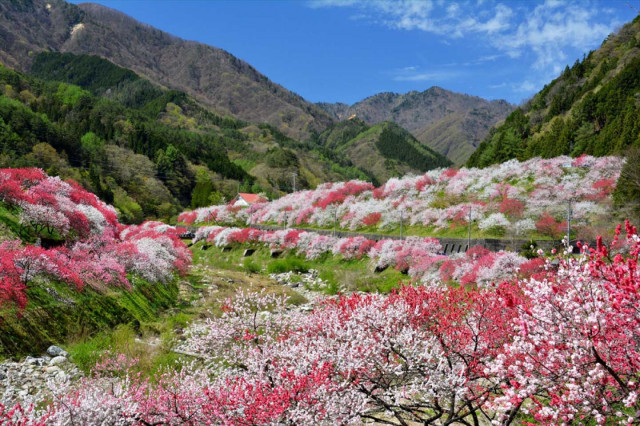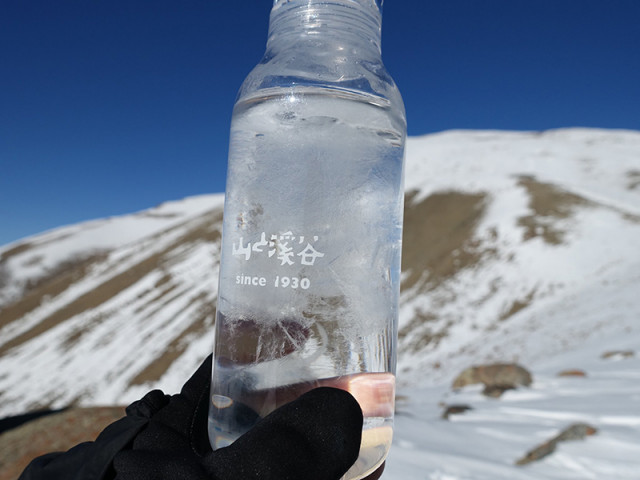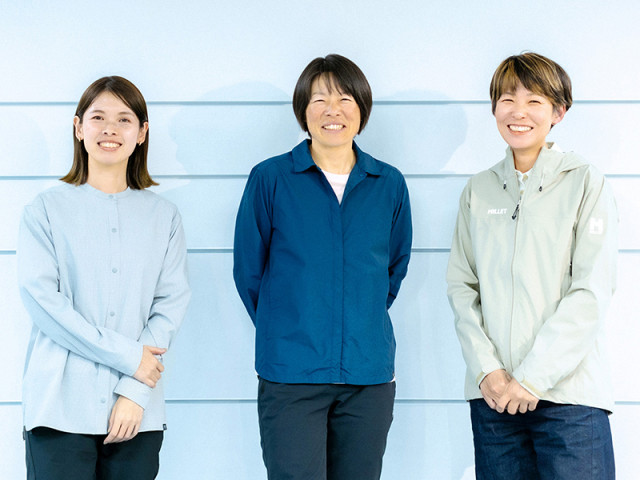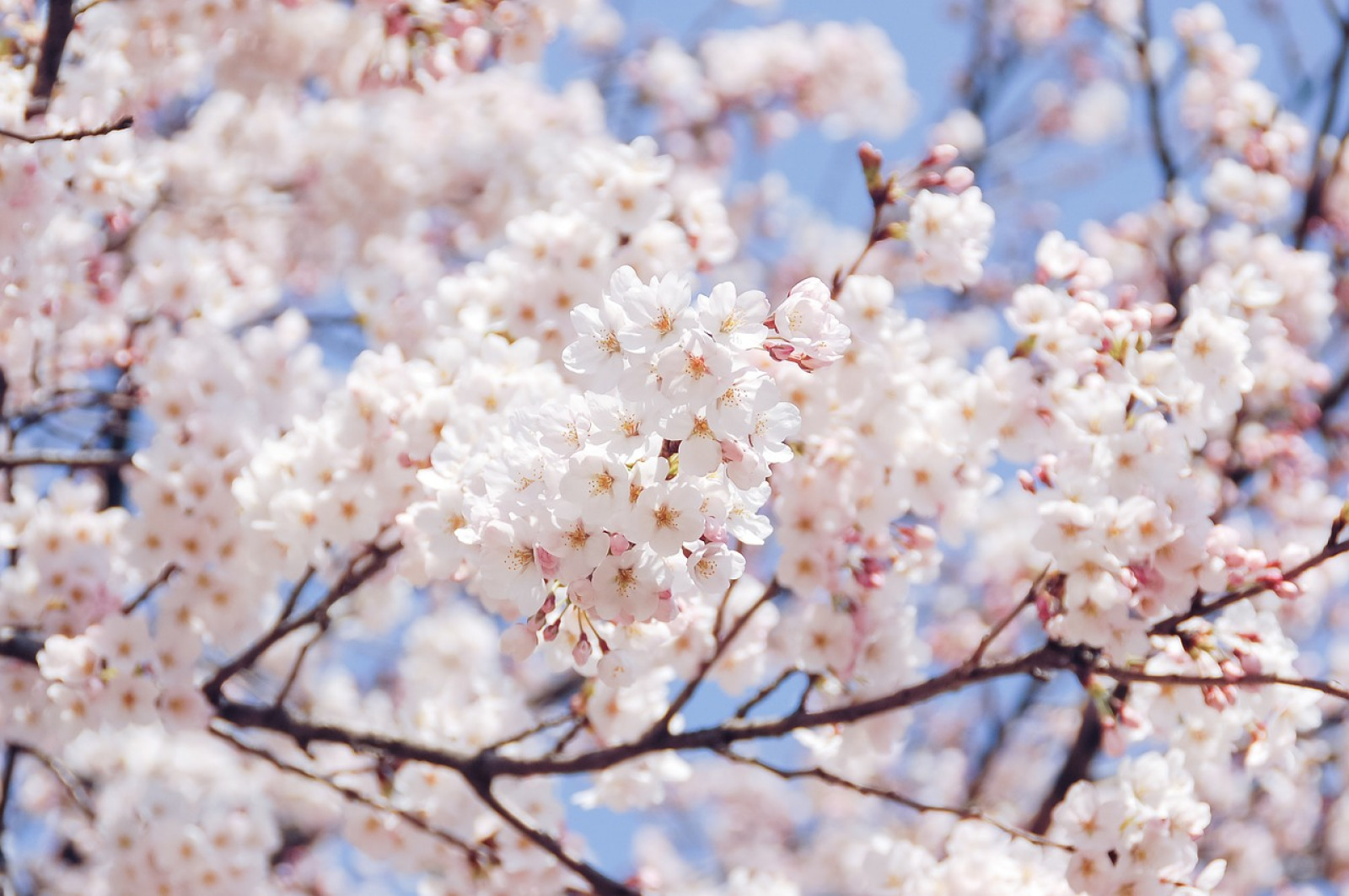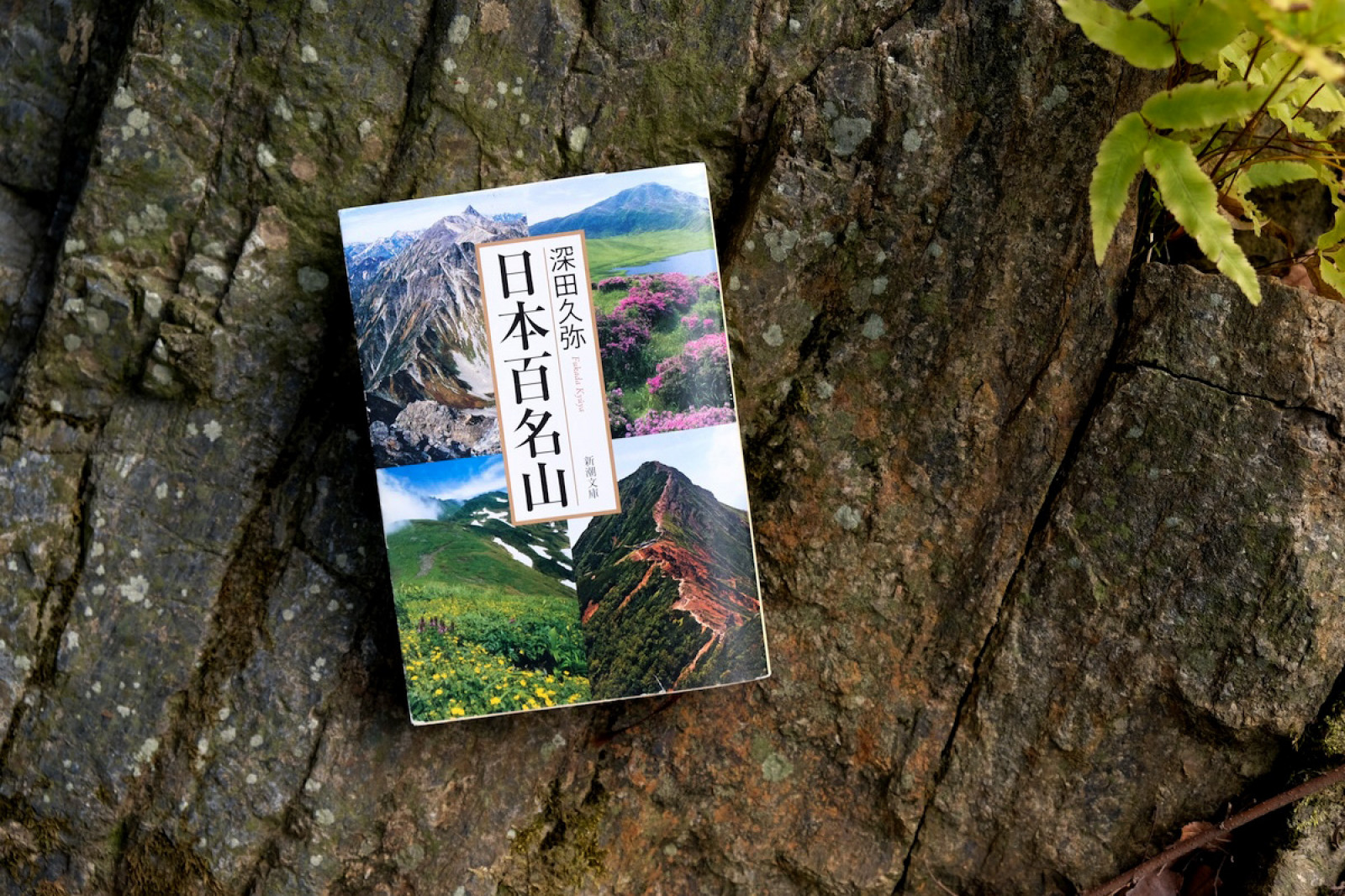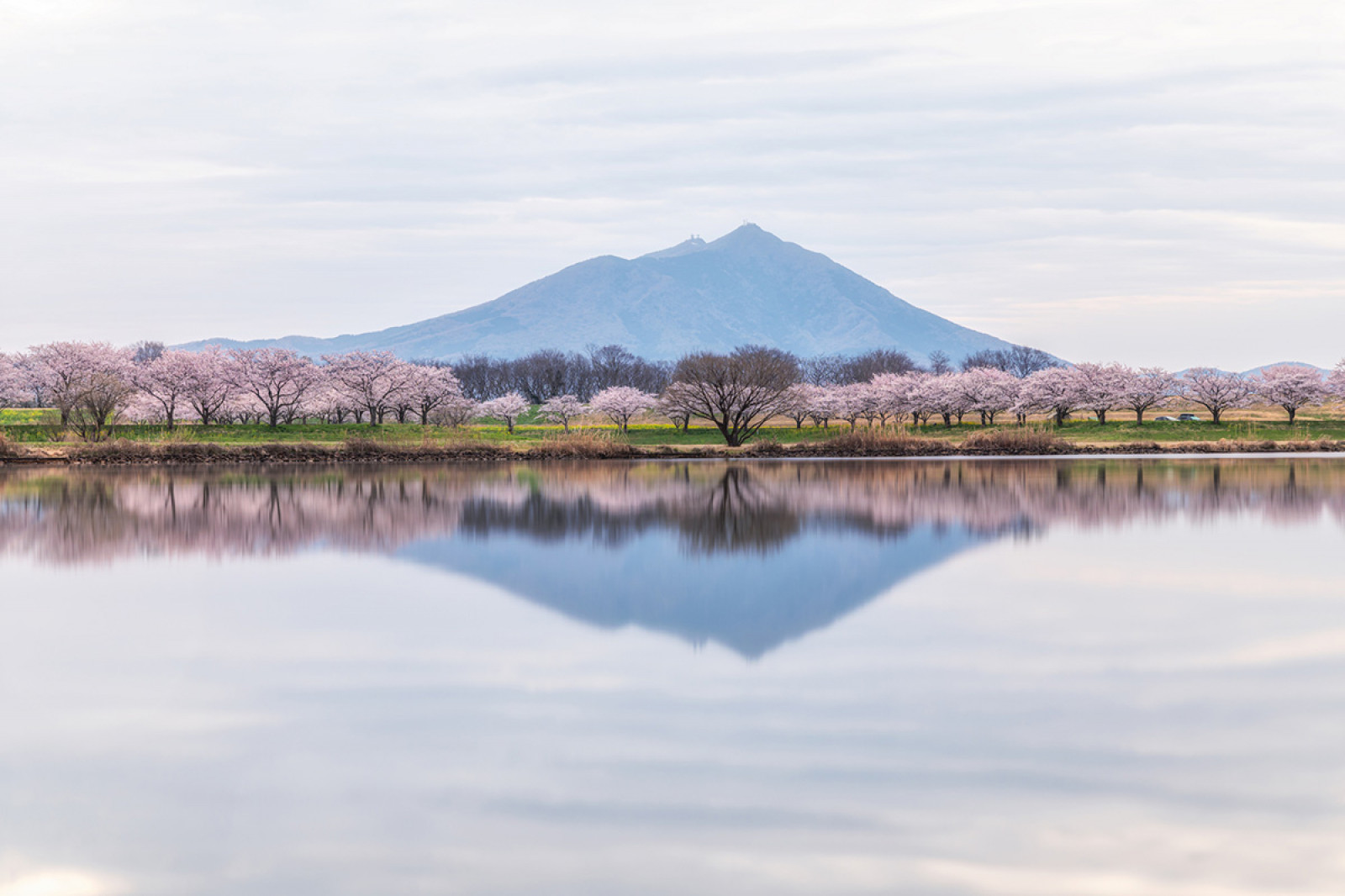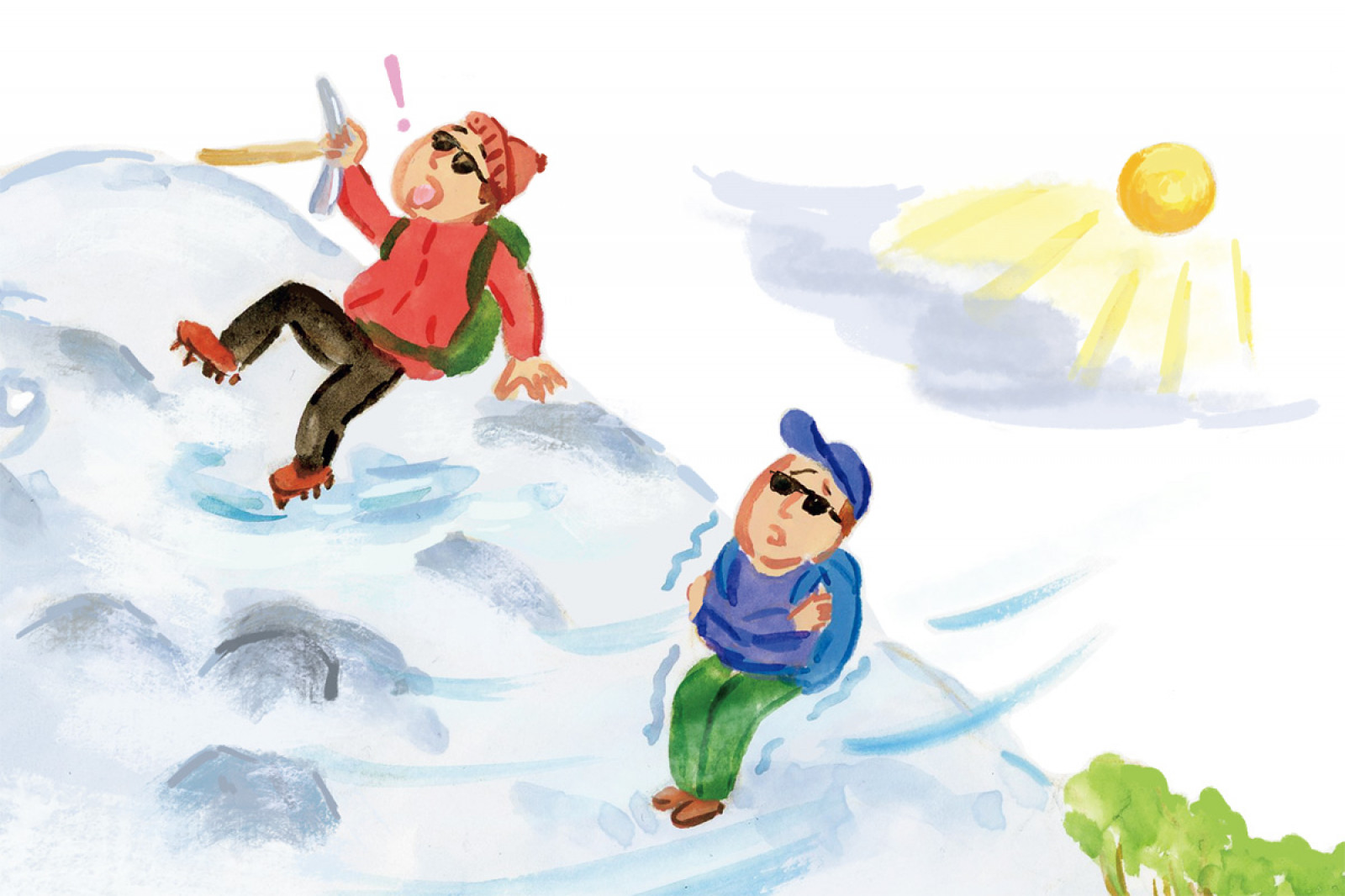神々の故郷、宮崎県・高千穂の天孫降臨伝承地・二上山と、彼の地に残る鬼・「鬼八」に思いを馳せる
神々が降り立った地として知られる宮崎県・高千穂町。降臨とされる場所のひとつが二上山で、そこには降臨に関する史跡も数多く残る。しかし、周辺に伝わる伝説から降臨以前の歴史を辿ると、高千穂の信仰とは一線を画す土着信仰の名残が残っていることに気付く。
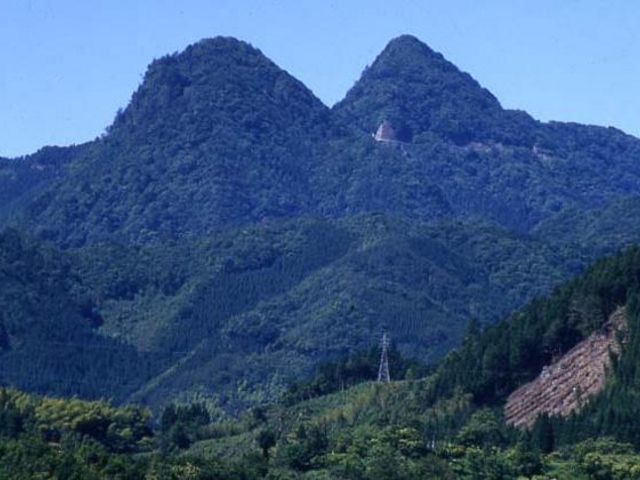
全国的にも神々の故郷としてひときわ名前が知れ渡っているのが宮崎県の高千穂町だろう。日本創生の神話が記された古事記において、神々が降り立った最初の土地として紹介されているのは多くの人の知るところだろう。
八百万の神々を奉ずるこの国の原点を知るうえで、古事記に記されたものが残されている中では最も古いとされている。その古事記の中にある天孫降臨の神話によると、神々の住まう高天原から地上の葦原の中つ国(あしはらのなかつくに:日本)へ一柱(神々を数える際の単位は「柱」)の神が降臨し、その後、その神の系譜3代目にカムヤマトイワレヒコと呼ばれる神が生まれた、という記述がある。なお、その別名を「神武」といい、現在の125代天皇陛下であられる今上天皇に連なる初代天皇陛下の誕生とされている。
高天原から降臨した一柱の神の名はニニギノミコト。天照大神の孫であるニニギノミコトが降臨したので、天(天照)の孫(ニニギ)の降臨伝説が天孫降臨神話として残されてきたわけだが、その降臨伝承地の山といえば、実は高千穂にはいくつもある。それが高千穂神話の世界感を豊かにしている所以ともいえるだろう。
その降臨伝承の山は、古事記では「日向の高千穂のくじふるたけ」、日本書紀ではこのほかに「くしひの高千穂のたけ」「高千穂のくしひの二上のたけ」などを挙げている。
実際に現地を訪れると、「くしふる」の名を持つ大きなお社が高千穂町に鎮座しており、ひとつの伝承を伝えている。ところが視野を広げてみると、高千穂町の中心地から少し離れた五ヶ瀬町と高千穂町の境に、二上山(ふたがみさん)と呼ばれる信仰の山があることに気が付く。
標高1,060メートルの山頂は男岳と女岳の2峰に分かれ、高千穂町から望む山容は、そびえ立つ2峰が特に秀麗だ。日本書紀では、ニニギノミコトが大勢の神々を引き連れてこの山に天下ったと伝えていて、男岳の南九合目あたりには三ヶ所神社奥宮がある。奥宮は急峻ながけの中腹にあるため参詣が容易でないので、今から千年程前に山の麓に里宮・三ヶ所神社が造られたとされている。
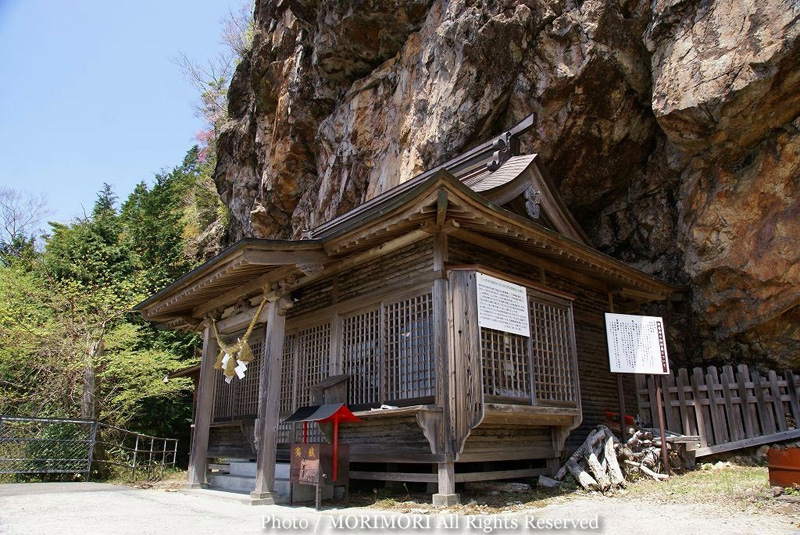
ここまで紹介した天孫降臨の神話は古事記や日本書紀に記されたものであって、降臨してきた神々の目線の域を出ていないとも考えられる。というのも、現地に行くとその天孫降臨の伝承の山とされている二上山には別角度の伝承がひっそりと伝わっているからだ。それが「鬼の鬼八(きはち)伝承」である。
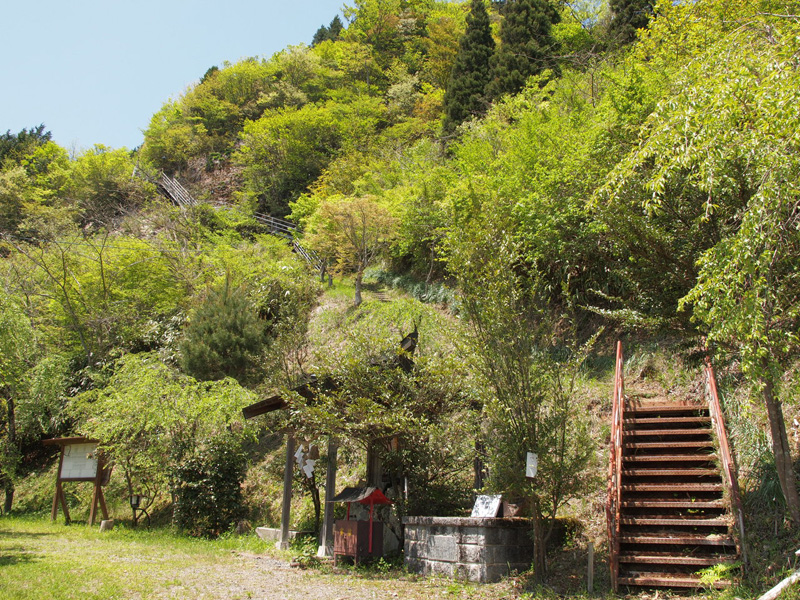
夜神楽が伝える土着信仰の名残り
高千穂町には全国的にも有名な夜神楽(よかぐら)という神事がある。この夜神楽では氏神(土地の守り神)が登場するシーンがあるが、その状況を「入鬼神」という。なぜ氏神様が登場するシーンを「入神」とせずに「鬼」をつけているのだろう。以前、夜神楽を拝見したときに、ふっと疑問に思ったことを思い出した。
以下は直接関係があるか否かはまだ未調査ではあるが――、
「鬼の鬼八」伝承に出会い、その内容に少し触れたときに思い出したことがある。それは、“神々が降臨してくる以前の、この土地の住人であり土着民族のことを後世の人が「鬼」と表現したのかもしれない”、ということ、つまり全国的にみられる先住民族に対して「鬼」「土蜘蛛」「クズ」「蝦夷」などの蔑称を付けていることだ。
「鬼の鬼八」伝承について簡単に触れておくと――、先に紹介した二上山山頂付近の乳ゲ岩屋と呼ばれる場所には、鬼八という存在の何者かが住まいとしていたとされている。
そこには清水が湧いている、古来から女性がその清水を頂くと丈夫な子を授かるという聖地であり、今でも山頂付近でありながら、こんこんと清らかな水を産みだしている。そこを住まいとしていた鬼八は、恐らくそのまま信仰の対象であったのではないだろうかと推測される。
鬼八は、湧き出る清水の水神様としてそこに住み、その清水を守る土着の王だったのかもしれない。その立場に立ってみると、降臨してきた神々は侵略者そのものであり、土着の王である鬼八は、降臨してきた神々からこの土地を守るために徹底抗戦を強いられた可能性すら出てくる。
鬼と呼ばれる側からの伝承を紐解くと、土地を奪われ仲間を奪われた鬼八は、住まいでありその土地の信仰の対象であった清水湧きでる乳ゲ岩屋を最後の最後まで守るために、二上山に籠り徹底抗戦したことがわかる。
そしてそれらの証左として、鬼八が最後に切り付けられ亡くなったとされる伝承地を「鬼切畑」といった地名で残していることだ。記紀で伝えられた天孫降臨神話のもう一人の主役は神武の兄とされるミケヌノミコトだが、このミケヌこそ鬼八退治の中心的存在であり、鬼切畑で鬼八を殺害し二上山を占領した張本人と言えよう。
侵略側の立場に立てば、徹底抗戦の末に信仰の山を奪って手中におさめることで、その土地の精神的支柱を押さえることになったのかもしれない。そう考えれば、そのこと自体を、その山の頂に「降臨」したと表現したのかもしれない。
神々の故郷と呼ばれる宮崎県高千穂町では、表面的にみれば神々の天孫降臨神話がきれいに表現されているが、その土地を奪われた土着民からすれば、侵略された歴史そのものともいえる。また鬼八の伝承から考察すると、高千穂町に大変多くの神社が創建された理由のひとつに、この鬼八の祟りを鎮めるためというものが存在する。
そう考えると、先に紹介した夜神楽における氏神の登場シーンを「入鬼神」と表現した、この「鬼」は、その土地を守り、聖地を守り抜こうとした「鬼八」そのものなのかもしれない。
高千穂町にお出かけの際は是非、二上山登拝をお勧めしたい。そこにはガイドブックには決して載らないその土地ならではの信仰の跡が見て取れる。いわゆる「神々の故郷」と紹介される高千穂の信仰とは一線を画す土着信仰の名残である。
Mt. Futagami in the origin place of Japanese deities, Takachiho and its guardian ogre
Takachiho-cho in Miyazaki prefecture, down in the south of Japan, is well-known as the origin place of Japanese deities. In Kojiki (The Records of Ancient Matters), the oldest extant chronicle in Japan, myths on the origin of the Japanese archipelago and the deities are narrated. In the chronicle, Takachiho is described as the very land where the deities descended to Earth.
When did this nation, which embraces eight million deities, begin? The Tenson-Korin myth in Kojiki elaborates on the story of the grandson deity of the sun goddess, who descended from the Plain of High Heaven where the deities lived, Taka-ama-hara, to the terrestrial Ashihara-no-Nakatsukuni (Japan), the so-called middle country of reed beds that existed between Taka-ama-hara (Heaven) and Yomi (Hell). Three generations after of that grandson is said to be the Emperor Jimmu(神武), the very first Emperor of Japan known as the direct ancestor of the present 125th Emperor.
There are several theories of which mountain the grandson deity, Ninigi-no-Mikoto, descended to. In Kojiki, it’s called “the peak Kujifurutake of Mt. Takachiho of Himuka”. In Nihon-shoki (The Chronicles of Japan), two other mountain names are mentioned, “Kushihi-no-Takachiho-no-Take” and “Takachiho-no-Kushihi-no-Futagami (twin-peaked)–no-Take”.
The fact you find the magnificent Kushifuru Shrine in Takachiho-cho supports the story of Kojiki, but if you look out a little further, you notice there is indeed a mountain called Futagami which has two peaks. Mt. Futagami is 1,060 meters high and has been worshipped by the locals for a long time. It’s situated right near the border of Takachiho-cho and Gokase-cho. As the name suggests, the top of the mountain is crowned with two peaks, one called the male (男岳) peak and the other the female(女岳) peak.
The view of the towering twin-peaks seen from the city of Takachiho is quite alluring. Nihon-shoki refers to this mountain as the one to which Ninigi-no-Mikoto descended, bringing many other deities with him. On the southern side of the male peak, at around the 9th station, is where you find the okumiya (inner-most shrine) of Sangasho Shrine.
As this was built halfway up a steep cliff and is not easy to visit, it’s believed that the people of about a thousand years ago created another more accessible worship space of the Sangasho Shrine, its satomiya, at the foot of the mountain, as we still see today.
Both the Kojiki and Nihon-Shoki mention the Tenson-Korin myth. But I would like to bring your attention to another legend related to the Mt. Futagami: the local legend of Kihachi, the Ogre.
Something else famous to the Takachiho-cho area is Yokagura, the sacred Shinto dance rituals performed on stage at night. In a Yokagura performance, there is a scene where an ujigami, a guardian god or spirit, comes onto the stage. The scene came to be known as “The entrance of the ogre god (入鬼神)”. How did they come to adopt the concept of an ogre into their worship of the local guardian deity? This question popped into my head when I got to watch a Yokagura performance.
I started to suspect that the concept of the ogre might be relatively recent, having come from how the relatively recent eras’ local people called, with a sense of awe, the very original people who they considered resided in the area even from the time before the deities descension. I have not confirmed this hypothesis of mine or backed it up with research, but if that’s the case, it resonates perfectly with many incidents recorded in historical documents, of people of different regions around the nation having referred to their area’s indigenous tribespeople using derogatory terms like “ogre”, “ground spider”, “trash” or “Emishi”.
In the legend, Kihachi the Ogre was said to have lived in the rock cave, Chichi-ga-Iwaya, near the top of Mt. Futagami. The cave was always considered a very sacred place as its nearby spring produced a stream of crystal-clear water, which people at the time believed would grant a pregnant woman a healthy baby. The spring remains today, still endlessly producing the stream of clear water. This is very peculiar considering how close the location is to the top of the mountain.
In this kind of circumstance, it’s not too difficult to imagine how Kihachi the Ogre, who was said to live there, could have become the subject of the local people’s worship himself. People worshipped the stream as their water deity, and quite possibly considered the ogre who lived there and protected the spring their indigenous king. If Kihachi the Ogre was the original guardian of the local area, then the deities who descended to the mountain he was protecting were merely intruders.
Maybe the story was that the ogre was forced to fight against these deities to protect the area and the people. And yes, the ogre lore of the region is written from the ogre’s perspective, something that you can see in the Yokagura performance. Kihachi the Ogre was robbed of his land and his people. Towards the end of the story, he resisted until the very end to protect the cave that produced the sacred crystal-clear water. A testimonial to this story is the name of a local area, “Ogre Slashed Field (鬼切畑)”, which still exists today.
The elder brother of Emperor Jimmu, Mikenu-no-Mikoto, is another main character in the story of the deities’ descent. In Both Kojiki and Nihon-Shoki, he killed Kihachi the Ogre in the field and occupied Mt. Futagami. Therefore, from Mikenu-no-Mikoto’s point of view, the same story could be seen as the righteous conquering of the pagan mountain following a fierce battle against an ogre who was worshipped by the locals, thereby establishing a rule over them. The phrase “deities who descended to the top of the mountain” might be metaphorically describing such an incident.
So, though “the origin place of Japanese deities”, Takachiho-cho of Miyazaki prefecture, is often expressed in and mentioned alongside the neat deities-descended myth, maybe it could also be considered a brutal history of the local area being invaded, from the perspective of the indigenous people who were originally there. The lore of Kihachi the Ogre hints towards the reason that so many shrines were built in Takachiho-cho was “to calm the divine wrath of Kihachi the Ogre”.
Remember the scene in which the guardian deity appears on the Yokagura stage? The reason why the scene is called “the entrance of the ogre deity” is probably clearer now. And, although it’s not explicit during the performance, it’s probably not too far-fetched to consider that the ogre deity who dances during Yokagura is the same Kihachi who lay down his life to protect the land and the people.
If you visit Takachiho, I strongly recommend that you go up Mt. Futagami and visit these deities. You will be able to witness traces of the narratives of how the local people led their lives in the region, the compelling remains of the region’s indigenous beliefs. It’s something you won’t find in tourist guidebooks.
プロフィール

中村 真
1972年、東京生まれ。雑誌『ecoloco』や書籍『JINJABOOK』などを発行する出版社の代表を務める。現在、イマジン(株)代表として、五感に響く出版・イベント・広告などのプランニングや、社会貢献プログラムなど様々なメディア活動を展開中。
2013年より広島県尾道市に「尾道自由大学」を開校し、校長に就任。学生時代より世界を旅し、外から見ることで日本の魅力に改めて気付き、温泉と神社を巡る日本一周を3度実行。
著書に『JINJA BOOK』、『JINJA TRAVEL BOOK』、『JINJA TRAVEL BOOK2』『日本の神さまと上手に暮らす法』など。
登山者のための神社学
山に登っていると、登山道の途中や山頂に祠を見かけることが多い。これらの祠はいったい何なのだろうか? 神社を巡る日本一周の旅を三度も実行した、中村真氏が、あっと驚く山の神社の話を書き綴る。


